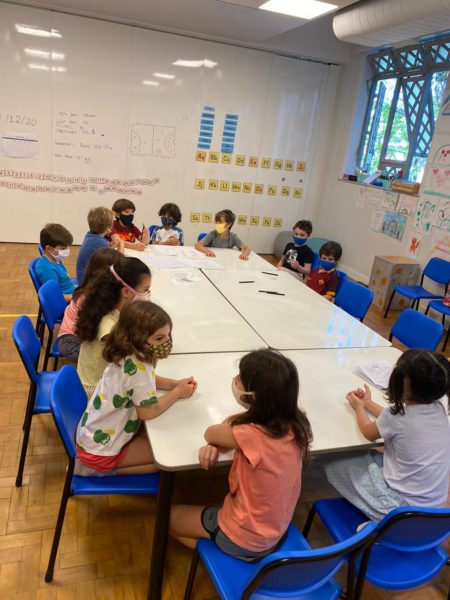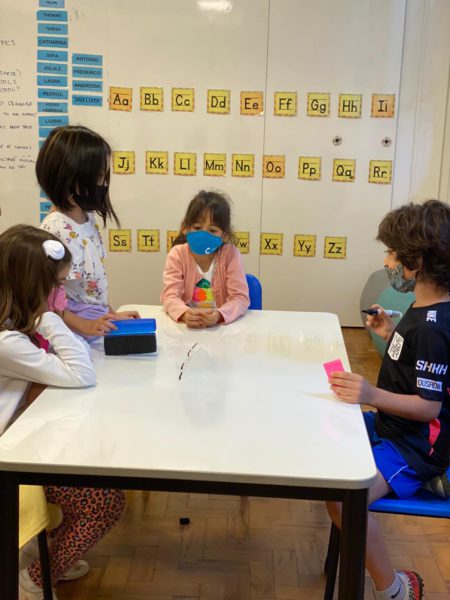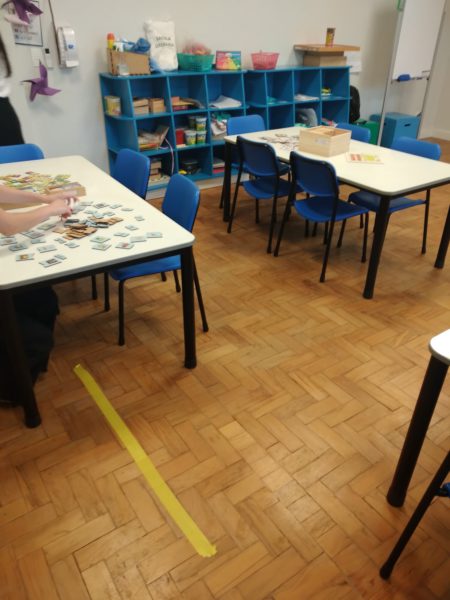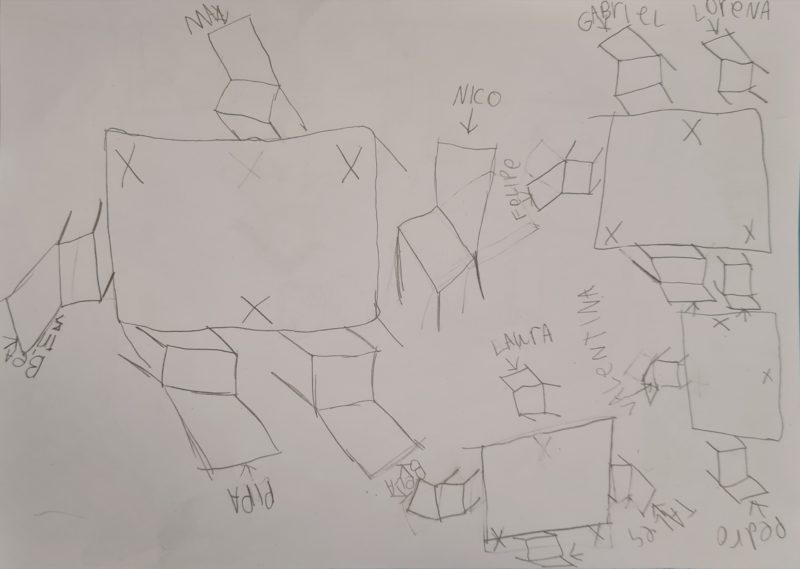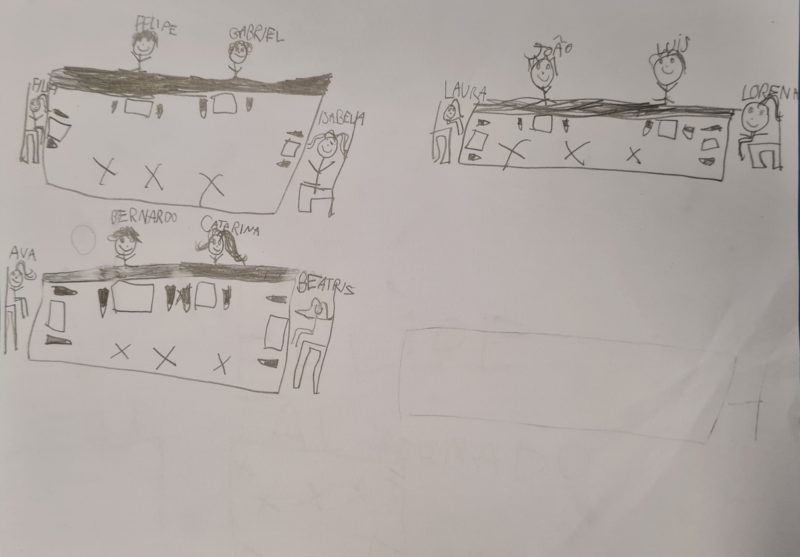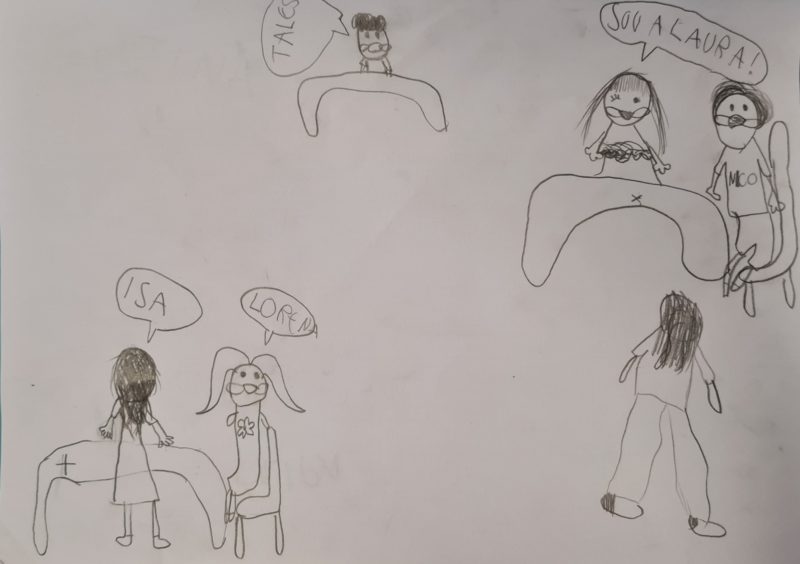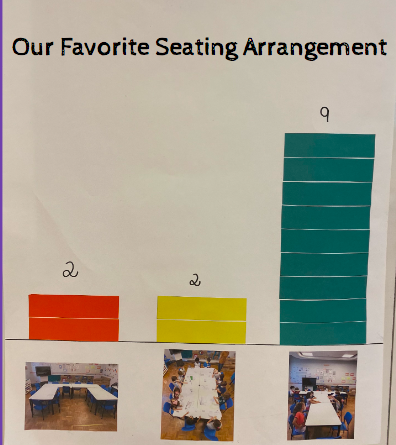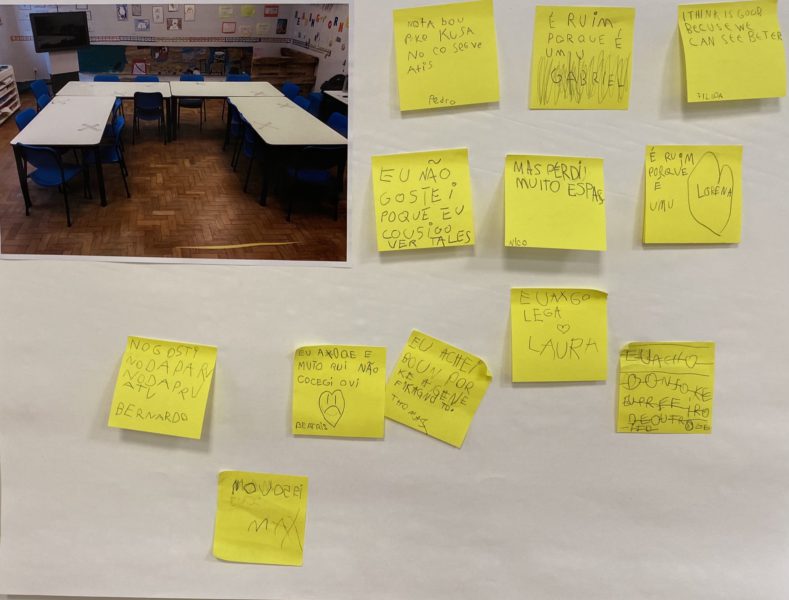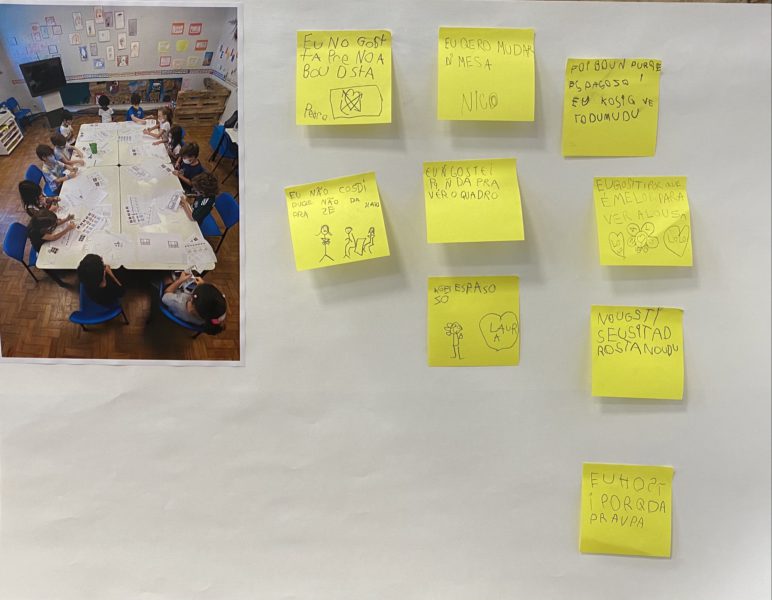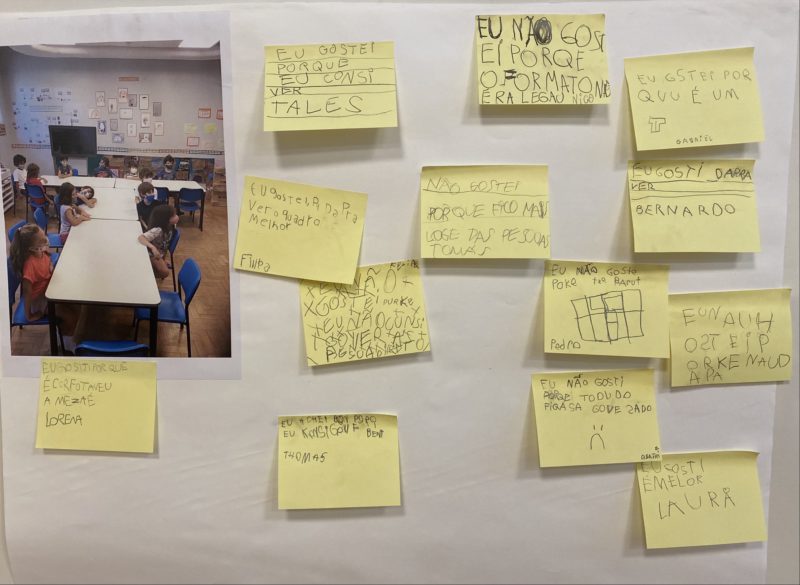The Environment as the Third Educator: What is the Importance of Seating Arrangements in a Learning Space?
How does the seating arrangement influence learners' interactions and relationships?
General topic of interest
From the school perspective, the environment plays a key role: it is the third educator. It is seen as a place that is welcoming, authentic aesthetically pleasing, culturally representative of the community, embraces nature and it is filled with purposeful materials. Having this in mind, this research aims at investigating possible seating arrangements and their impact on learners' interactions and relationships. Learners were given voice to decide on the seating arrangements and they also reflected upon them. They shared their ideas and opinions and organized their preferences in a graph.
Participants
Grade 1 learners from three different groups.
Data collecting approach
In the first two weeks the seating arrangements were organized by the educators and the learners were given the opportunity to tell their impressions about it. In the third week, the learners were divided into smaller groups and they discussed and drew what they thought would be the best seating arrangements. As the weeks passed, the tables were rearranged and by the end the learners shared their ideas about the different organization in the classroom and how the seating choices can affect the learning process.
Data collecting example
In order to analyze the group's preferences, a graph was collectively created. Learners had the opportunity to read the data collected and reflect upon it.
Emerging results
When the learners were discussing, reading and drawing their suggestions for the best seating arrangements it was possible to observe how the environment as a third educator is present to them, since they could not talk only about the tables and chairs, but how they considered all the furnitures and objects as a whole in the learning space and they showed concern regarding the easy access to the materials.
Reflections
The main takeaway from this research is the importance of considering the classroom as a living space where not only the seating arrangements, but also the furniture, decoration, lighting, temperature and works display matter. And all the changes and improvements in this enriching and learning space have to come from the learners` perspective as well. At their age, being close to their friends overcome other arguments such as social distancing due to covid-19 and noise level decrease that can benefit their focus.
Slides
Next steps
Continue to create learning opportunities by changing the space, for example by adding or taking away resources. Also, we would like to extend our inquiry to explore how different spaces foster a sense of belonging and community within our class.







